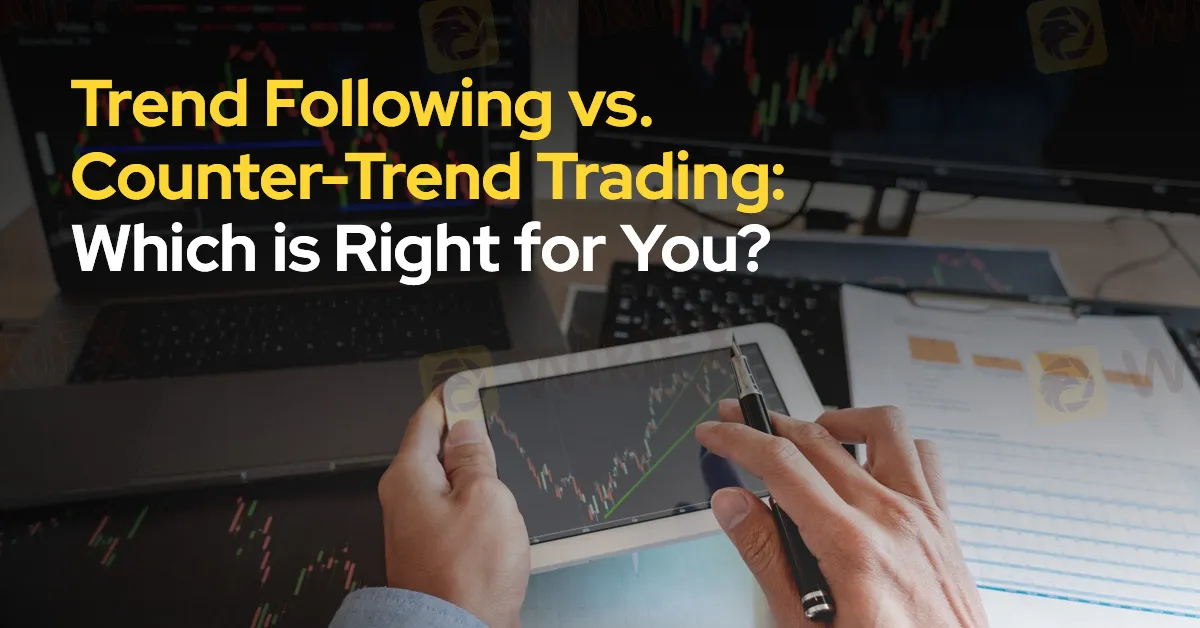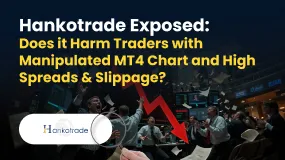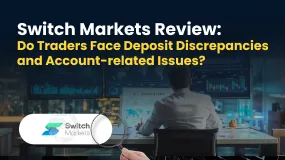简体中文
繁體中文
English
Pусский
日本語
ภาษาไทย
Tiếng Việt
Bahasa Indonesia
Español
हिन्दी
Filippiiniläinen
Français
Deutsch
Português
Türkçe
한국어
العربية
Trend Following vs. Counter-Trend Trading: Which is Right for You?
Abstract:Two prominent strategies often compete for the attention of traders: trend following and counter-trend trading. Each method has its strengths and weaknesses, and understanding them can help you choose the approach that aligns best with your trading style and risk tolerance.

Two prominent strategies often compete for the attention of traders: trend following and counter-trend trading. Each method has its strengths and weaknesses, and understanding them can help you choose the approach that aligns best with your trading style and risk tolerance.
Trend Following: Pros and Cons
Pros:
Capitalizing on Momentum:
Trend-following strategies aim to capture gains by riding established market trends. When a trend is in place, prices tend to continue moving in that direction, providing profit opportunities.
Clear Signals:
Trend followers often use technical indicators, such as moving averages and trend lines, which provide clear entry and exit signals. This can simplify decision-making and help traders stay disciplined.
Higher Win Rate:
Many trend followers report a higher win rate because they trade in the direction of the market, reducing the likelihood of premature exits.
Cons:
Late Entry Risk:
Trend followers may miss the optimal entry point, leading to reduced profit potential. By the time they enter a trade, a significant portion of the trend may have already occurred.
Whipsaw Risk:
In choppy or sideways markets, trend-following strategies can generate false signals, leading to losses. This makes it crucial for traders to identify strong trends before committing capital.
Emotional Stress:
Riding a trend can be mentally taxing, especially during pullbacks. Traders must maintain discipline and resist the urge to exit too early.
Counter-Trend Trading: Pros and Cons
Pros:
Profit from Market Corrections:
Counter-trend trading seeks to capitalize on price reversals, allowing traders to profit from corrections against the prevailing trend. This can be particularly rewarding in volatile markets.
Potential for High Rewards:
Successfully identifying trend reversals can lead to substantial profits, as counter-trend traders can enter positions at advantageous prices.
Flexibility:
Counter-trend traders can adapt to various market conditions, making it a versatile strategy for different trading environments.
Cons:
Higher Risk:
Counter-trend trading is inherently riskier, as traders are often going against the market momentum. This can result in significant losses if the trend continues.
Frequent Losses:
Counter-trend traders may experience more losing trades, as not all corrections lead to reversals. This can be discouraging for some traders.
Requires Strong Analysis:
Successfully identifying reversals requires a deep understanding of market dynamics, technical analysis, and the ability to read price action.

Choosing the Right Strategy for You
Selecting between trend following and counter-trend trading ultimately depends on your individual preferences and circumstances:
Risk Tolerance:
If you have a low tolerance for risk and prefer a more systematic approach, trend following may suit you better. Conversely, if you can handle higher risk and are comfortable with the potential for more frequent losses, counter-trend trading could be a good fit.
Time Commitment:
Trend following often requires ongoing analysis and monitoring of market conditions, while counter-trend trading can demand quick decision-making. Consider how much time you can dedicate to trading.
Personality:
Your personality plays a significant role in choosing a strategy. If you thrive on excitement and enjoy the challenge of going against the grain, counter-trend trading may appeal to you. If you prefer a more structured approach with clear signals, trend following might be the way to go.
Market Conditions:
The prevailing market environment can influence your choice. In strong trending markets, trend following tends to be more effective, while counter-trend trading may be more advantageous in choppy or range-bound conditions.
Conclusion
Both trend following and counter-trend trading have their merits, and the best choice depends on your trading style, risk tolerance, and market conditions. By evaluating your preferences and the characteristics of each strategy, you can make an informed decision that enhances your trading experience.
Consider testing both strategies on a demo account to see which aligns better with your goals and personality. Ultimately, understanding your strengths and weaknesses as a trader will empower you to navigate the markets more effectively.

Disclaimer:
The views in this article only represent the author's personal views, and do not constitute investment advice on this platform. This platform does not guarantee the accuracy, completeness and timeliness of the information in the article, and will not be liable for any loss caused by the use of or reliance on the information in the article.
Read more

Hankotrade Exposed: Does it Harm Traders with Manipulated MT4 Chart and High Spreads & Slippage?
Have you witnessed a manipulated MT4 chart on Hankotrade login, showing inaccurate trading figures? Have you been victimized by high swap fees, inflated spreads, and massive slippage? Is the payment processing time too long at Hankotrade? Do you face downtime issues, especially when the New York trading session is on? These are some top complaints against the Belize-based forex broker. In this article, we have shared these complaints. Take a look!

Switch Markets Review: Do Traders Face Deposit Discrepancies and Account-related Issues?
Do you fail to deposit your funds into the Switch Markets forex trading account? Earned profits, withdrew them too, but did Switch Markets block your deposits? Wanted to close your trading account due to payment-related issues, but in turn got your emails blocked by the Australia-based forex broker? Faced a negative trading account balance because of illegitimate trade order execution? Many traders have shared these stories about Switch Markets on broker review platforms. In this Switch Markets review article, we have mentioned the same. Read on!

Is IEXS Safe or a Scam? A 2025 Review Based on 13 User Complaints and Regulatory Red Flags
You're asking a direct and important question: Is IEXS safe or a scam? As someone who might trade with them or already does, this is the most important research you can do. While IEXS says it is a global broker with over ten years of experience, a detailed look at its regulatory status and many user reviews shows serious warning signs that cannot be ignored. The evidence suggests a high-risk situation for traders' capital. This review will examine the available information, from official regulatory warnings to concerning first-hand user complaints, to give you a clear and fact-based view of the risks involved in trading with IEXS. Our goal is to give you the facts you need to make a smart decision.

Having Trouble Getting Your Funds Out of IEXS? A Simple Guide to Delays and Solutions
Are you having trouble withdrawing funds from your IEXS account or facing delays getting your funds? Not being able to access your own capital is one of the most stressful situations any trader can face. It breaks down your basic trust with a broker. This isn't just annoying - it's a serious problem that can mess up your financial plans and cause a lot of worry. This guide goes beyond basic advice. We'll look at real user experiences and official regulatory information to give you clear answers. Our goal is to help you understand why IEXS withdrawal problems happen and show you practical steps you can take. We understand your concerns and want to give you the information you need to handle this tough situation.
WikiFX Broker
Latest News
CQG Partners with Webull Singapore to Power the Broker’s New Futures Trading Offering
【WikiEXPO Global Expert Interviews】Ashish Kumar Singh: Building a Responsible and Interoperable Web3
IEXS Review 2025: A Complete Expert Analysis
CySEC Flags 21 Unauthorized Broker Websites in 2025 Crackdown
IEXS Regulation: A Complete Guide to Its Licenses and Safety Warnings
WinproFx Withdrawal Problems: A Complete Look at Delays and User Reports
Simulated Trading Competition Experience Sharing
Factory Orders Data Show Rebound In August
WinproFx Regulation: A Complete Guide to Its Licensing and Safety for Traders
Interactive Brokers Expands Access to Taipei Exchange
Currency Calculator



